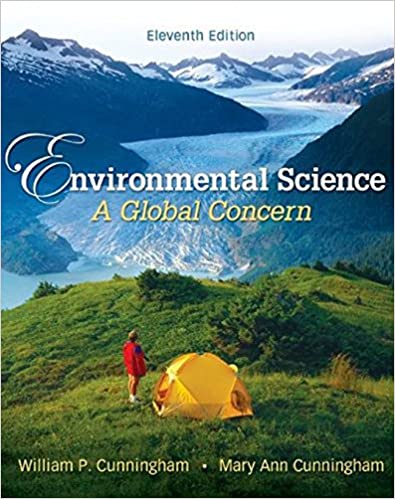
Environmental Science: A Global ConcernEnvironmental Science: A Global Concern 11th Edition by William Cunningham, Mary Ann Cunningham
Edition 11ISBN: 978-0697806451
Environmental Science: A Global ConcernEnvironmental Science: A Global Concern 11th Edition by William Cunningham, Mary Ann Cunningham
Edition 11ISBN: 978-0697806451 Exercise 15
Based on what you've learned in this chapter, which of the pollutants in these two graphs (figs. 18.10 and 18.13) do you think are most likely to come from the following sources
FIGURE 18.10 Detection frequency of organic, wastewater contaminants in a recent USGS survey. Maximum concentrations in water samples are shown above the bars in micrograms per liter. Dominant substances included DEET insect repellent, caffeine, and triclosan, which comes from antibacterial soaps.

FIGURE 18.13 Twelve leading causes of surface-water impairment in the United States. *Undetermined causes.

FIGURE 18.10 Detection frequency of organic, wastewater contaminants in a recent USGS survey. Maximum concentrations in water samples are shown above the bars in micrograms per liter. Dominant substances included DEET insect repellent, caffeine, and triclosan, which comes from antibacterial soaps.

FIGURE 18.13 Twelve leading causes of surface-water impairment in the United States. *Undetermined causes.

Explanation
Various pollutants are discharged by hum...
Environmental Science: A Global ConcernEnvironmental Science: A Global Concern 11th Edition by William Cunningham, Mary Ann Cunningham
Why don’t you like this exercise?
Other Minimum 8 character and maximum 255 character
Character 255


